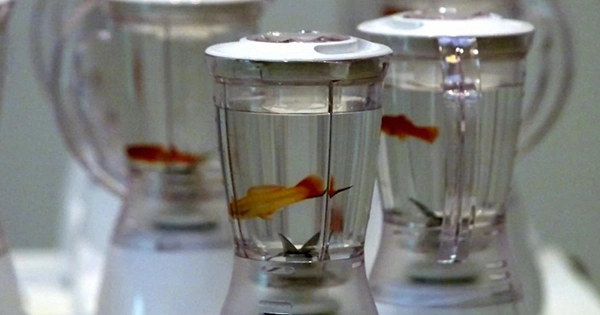There have been cases throughout human history of people doing heinous acts simply because they can. A public art piece by Marina Abramovich showed that simply giving a gun and instructions to “do as they wish” to random bystanders was enough to make them almost commit murder; the Stanford Prison experiment showed that given a little power, a person would easily begin to mistreat peers of their own free will. These are only a few examples of how simple it is to persuade ordinary people to do horrible things, and one museum “experiment” from 2000 went even farther.
An “art” work named “Helena & El Pascador” by the somewhat-famous Marco Evaristti debuted at the Trapholt Museum in Denmark, presenting museum-goers with 10 blenders filled with water and a solitary goldfish swimming around the blades. The visitors were offered two options: click the giant “ON” button to kill the fish (for no reason), or don’t press the button and let the fish survive. According to a BBC report, the work was designed to make listeners “fight with their conscience.” “It was a protest against what’s going on in the world, against this cynicism, this violence,” Evaristti concluded.
The sculpture might have been more evocative of morality if the blenders had been disconnected; instead, the blenders were totally real, and the ON button truly functioned. While the majority of visitors did not hit the button, at least one did, killing two goldfish in a flurry of horrible violence.
The authorities insisted that museum owner Peter Meyer remove the blenders immediately after receiving many complaints about them being plugged in. Meyer refused, and the cops fined him 2,000 kroner ($205 at today’s exchange rate). Mayer refused to pay the fee in the interest of “creative freedom,” and was charged with animal cruelty in court. Meyer was cleared of animal cruelty when veterinarian testimony revealed that the fish would have perished nearly instantaneously and hence would not have suffered for long.
Meyer was exempt from all penalties, including the fee. Years later, the play remains an unsettling look at human sadism and the truth that cruelty does not always require a cause or justification. Years later, Evaristti reappeared with another highly disturbing “art” performance, this time hosting a dinner party with meatballs prepared from his own fat.
















